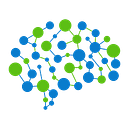Top Python Data Visualization Libraries of 2025
Data visualization is no longer just about static charts — it’s the backbone of data-driven decision-making in 2025. With AI integration, real-time analytics, and low-code tools dominating the landscape, Python continues to lead as the go-to language for transforming raw data into actionable insights. But which libraries are driving this revolution?
We’ve analyzed GitHub star growth over the past 12 months to rank the fastest-evolving visualization tools. This metric not only reflects popularity but also signals which libraries are adapting to modern demands like scalability, interactivity, and cross-platform flexibility. Let’s dive in!
🚀 Top Python Visualization Libraries Ranked by GitHub Star Growth (2024–2025)
1. pygwalker: The Low-Code Powerhouse
📈 +5,237 stars | GitHub | PyGWalker Website
Why It’s Rising:
Pygwalker has exploded in popularity as teams prioritize speed and accessibility in data exploration. By merging Jupyter Notebooks with a Tableau-like interface, it eliminates the coding barrier for stakeholders while retaining flexibility for engineers.
Key Features in 2025:
- Drag-and-Drop Magic: Turn pandas DataFrames into interactive dashboards in seconds — no JavaScript required.
- Enterprise-Ready Scalability: Direct integration with Snowflake, ClickHouse, and DuckDB lets teams handle billion-row datasets without breaking a sweat.
- Cross-Platform Versatility: Available in Python, R, and JavaScript, making it a unified tool for full-stack data teams.
- AI-Powered Enhancements: New AI chart recommendations automate exploratory analysis (a 2025 update).
Use Case: Perfect for collaborative environments where analysts and business users need to iterate quickly.
2. matplotlib: The Timeless Titan
📈 +2,076 stars | GitHub
Why It’s Still Relevant:
Matplotlib remains the foundation of Python visualization. Its 2025 resurgence is fueled by a major 4.0 update introducing GPU-accelerated rendering and dark mode defaults — proving old dogs can learn new tricks.
Key Features:
- Pixel-Perfect Customization: From scientific papers to infographics, control every element.
- Seamless Integration: Plays nicely with pandas, NumPy, and ML frameworks like PyTorch.
- Community Strength: 15,000+ Stack Overflow answers and counting.
3. Plotly: The Interactive Dashboard King
📈 +1,956 stars | GitHub
2025’s Edge:
Plotly dominates the dashboarding space, especially with its AI-assisted design mode (new in Dash 3.0). Analysts now use natural language prompts like “Show quarterly sales as a 3D globe” to generate visuals.
Standout Features:
- Web-Ready Interactivity: Embed animations, tooltips, and cross-filtering in production dashboards.
- Collaboration Hub: Share projects via Plotly Cloud with role-based access control.
- AR/VR Support: Render 3D plots in Meta Quest headsets for immersive data walks.
Use Case: Building investor-facing dashboards or IoT monitoring systems.
4. Seaborn: The Statistician’s Shortcut
📈 +1,232 stars | GitHub
2025’s Upgrade:
Seaborn’s latest release focuses on causal inference visuals — think difference-in-difference plots and propensity score distributions. It’s now the darling of social science researchers.
Why Teams Love It:
- Batteries-Included Styling: Default themes align with journal publication guidelines (APA, Nature, etc.).
- Pandas Symbiosis:
.plot()methods extend DataFrame functionality elegantly. - Accessible Complexity: Heatmaps, violin plots, and cluster maps in 3 lines of code.
5. Bokeh: The Real-Time Data Champion
📈 +1,110 stars | GitHub
2025’s Niche:
Bokeh thrives in edge computing and IoT. Its WebSocket streaming API lets factories monitor equipment sensors with sub-second latency.
Key Innovations:
- Dynamic Updates: Live charts that refresh without page reloads.
- Security-First: Built-in OAuth2 support for enterprise dashboards.
- Thematic Templates: Prebuilt themes for finance, healthcare, and supply chain.
Use Case: Real-time fraud detection or smart city traffic management.
6. Altair: The Academic’s Ally
📈 +874 stars | GitHub
2025’s Breakthrough:
Altair’s adoption of Grammar of Interactive Graphics has made it a research staple. PhD candidates love its reproducibility — visualizations export as LaTeX-ready SVGs.
Why It Shines:
- Declarative Syntax: Define what to plot, not how.
- Interactivity as Standard: Cross-filtering, panning, and zooming out-of-the-box.
- Vega Fusion Engine: Renders 1M+ point datasets smoothly (2025’s backend upgrade).
🔮 Trends Shaping 2025’s Visualization Landscape
- Low-Code Democratization: Tools like pygwalker let domain experts (not just engineers) drive insights.
- AI Co-Pilots: Libraries now suggest chart types and anomalies via integrated LLMs.
- Real-Time Everything: Streaming data demands libraries like Bokeh to handle milliseconds.
- Ethical Visualization: New defaults avoid misleading scales and encourage accessibility (alt-text, colorblind modes).
🛠️ Key Takeaways
- pygwalker has seen an explosive rise, reflecting the demand for low-code, interactive visualization tools.
- matplotlib and plotly remain strong contenders despite their age, showcasing their continued importance in the Python ecosystem.
- Seaborn, bokeh, and Altair continue to be widely used for specific needs such as statistical plotting, interactive dashboards, and concise declarative visualization.
As Python’s data ecosystem evolves, these visualization libraries will continue to play a crucial role in data exploration, storytelling, and dashboarding. If you’re looking for a visualization tool in 2025, this ranking provides a strong starting point!
What’s your stack? Have you tried these 2025 updates? Share your thoughts below! 👇
